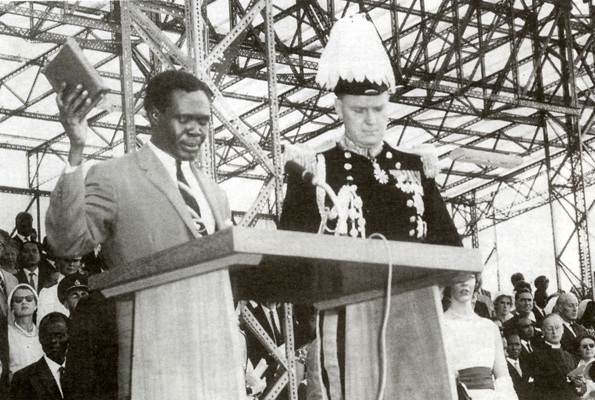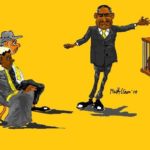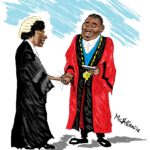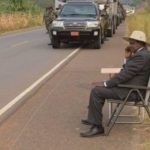Ugandans will celebrate 57th independence anniversary come October 9, 2019 under the theme, “Consolidation of National Unity, Security, Freedom and Prosperity”. Below is a synopsis as written by presented by the organisers of the upcoming independence celebrations to be held in Sironko district in eastern Uganda?
Uganda will on October 9, 2019, celebrate its 57th Independence Day anniversary.
More than half of the current population was not yet born in 1962. It is, therefore, important to remind ourselves of the origin of the struggle for independence and the people who played significant roles.
Uganda, the ‘Pearl of Africa’, sits astride the equator in Eastern Africa. At the time of independence in 1962, after 68 years of British rule, Uganda had one of the most vibrant and promising economies in Sub-Saharan Africa (World Bank, 1993b).
Favored with a good climate and fertile soils, the country was self-sufficient in food, and agriculture was the single largest export-earner. However, its potential for growth has been curtailed by more than 20 years of civil strife, especially between 1966 and 1986. The resultant economic mismanagement and civil war have had disastrous effects on the once-promising country.
Uganda obtained independence under a coalition government of Milton Obote’s predominantly protestant Uganda People’s Congress (UPC) and the Buganda traditionalist’s political party Kabaka Yekka (KY, which translates as “The King Alone”). Milton Obote became prime minister and chose the Buganda’s Kabaka (king) Sir Edward Mutesa as his largely ceremonial president when Uganda became a republic in 1963.
Independence in Africa has been variously defined and or interpreted by its beneficiaries. Some have understood it to be a mere victorious replacement of alien white colonialists, a lowering of the colonial flag and the hosting of that of the newly independent nation, by the Africans. Others interpreted independence to mean the return of sovereignty back to African chiefs to manage and allocate resources in the designed territories. But much as these interpretations may bear some unarguable grains of truth, Independence is much more than this. It bears noble meaning and deserves greater responsibility.
True independence enables the benefiting nations to build self-confidence, realise their full potential and lead a life of dignity and fulfillment, a life free from exploitation and or any social and political oppression. Indeed, Uganda attained full possession of their sovereignty and began on the road to decide and shape their destiny through democratic means. Alas, few years down the road selfish interests took center stage and slowly we backtracked from democratic path to dictatorship and finally into tyranny of the likes of Idi Amin before sanity was restored in 1986.
To stand does not mean that you can’t or won’t fall, but to fall, rise, stand and move forward is what makes an undisputable achievement. Indeed since 9th october 1962 to date, Uganda has stumbled and even fallen, but we have taken it in our strides, risen, stood firmly and made fundamental steps forward.
This is the reason why today many Ugandans especially the young generation is more concerned and interested in opportunity and benefit coming out of the convincingly strong foundation for our future prosperity as individuals, families and country.
Struggle for Uganda’s independence
The origin of the struggle for Uganda’s Independence began in 1940s when Ugandans staged various demonstrations against the colonial rule largely objecting to economic exploitations. They objected the manipulative pricings of their cash crops that did not give the deserved benefits. Such bold and courageous face-up against the colonial rule later metamorphosed political agitation leading to the formation of various political parties all agitating for self-rule.
As a result, Uganda’s first political party the Uganda National Congress (UNC) was founded in 1952. The party that was largely for farmers was founded by Ignatius Kangave Musaazi, Abubakar Kakyama Mayanja, Stefano Abwangoto (Bugisu), Ben Okwerede (Teso), Yekosofati Engur (Lango), and S.B. Katembo (Tooro). Ignatius Kangave Musaazi, was the founding president general, and Mayanja was the founding secretary general. The others were chairpersons in their respective regions. The party was first based at the Kabaka’s Lake, Mengo, in the house of a one, Kitamirike. His place was the headquarters of the party for several years before it moved to Katwe and later to Kololo in the late 1950s.
The struggle for independence got a momentum with the formation of many other political parties that further enhanced the agitation for independence. Key among such parties was Uganda People’s Congress (UPC) of Dr Apolo Milton Obote, Grace Ibingira, John Kakonge and others. There was also the Democratic Party under Benedicto Kiwanuka plus other small political parties.
Sir Frederick Mutesa, the first none executive president of Uganda who was also a monarch, found it difficult to take orders from the national government, which was headed by A. Milton Obote. In 1964 there was a referendum to decide whether two counties, which Buganda had annexed, should be returned to the neighbouring territory of Bunyoro. Bunyoro won, but Mutesa refused to sign the transfer instrument, thereby creating a crisis for the government.
From that point matters deteriorated rapidly. Until 1966 Uganda managed to maintain a degree of stability, but in that year matters came to a head, as the Buganda government resolved to expel the Ugandan government from its soil (Ibingira, 1980). This event played into the hands of Obote, whose national government responded by sending soldiers to the Kabaka’s palace to ‘investigate’ the presence of arms. The soldiers (headed by Idi Amin) over-ran the palace and forced the Kabaka into exile. Obote proceeded to suspend the constitution crafted for the independence of Uganda and declared him-self executive president, head of state and government and commander-in-chief of the armed forces. The political instability had begun which resulted into a coup by Idi Amin and total collapse of the state of Uganda.
Post-Independence Uganda had this quagmire to the extent that by 1986, the country was experiencing absolute poverty and total regression.
Fortunately that period came and passed, leaving the nation with bitter memories which, though, have since served as learnable lessons. The last thirty three years of our Independence have witnessed a miraculous resurrection of Uganda as an Independent nation, thanks to some patriotic and caring Ugandans who saw the wisdom in using these learnable lessons. The resurrection began with the restoration of peace and security of both person and property and of democratic and constitutional governance.
Appreciating the need for markets and the wisdom of living peacefully together on this global village, the world or our mother earth, Uganda has vigorously established and strengthened friendly relations beyond her borders, regionally and internationally.
Our armed forces that were hitherto engaged in putting to an end destructive civil wars are in Uganda are now proud combatants that are restoring peace in countries across the continent that are still grappling with armed conflicts.
Government has carried out interventions that have led to economic growth and national development which is estimated at 6.3 per cent for financial year 2019/2019, having risen from 6.1 per cent in 2017/2018.
Several scientific indicators of development give hope to the Ugandans that the struggle to our middle term vision of reaching an upper middle class status by 2040 is not an impossible or lazy one.
Development of human resource starting with our young generation is a key strategy for strengthening of our Independence. Coupled with these developments in education is in the provision of health facilities.
Similar developments are afloat across the whole range of Uganda’s life e.g. Economy, roads, ICT, Construction, Democratic governance, Justice hither to deprived sections of Ugandans like Women, the youth, the Disabled, the Elderly and Entrepreneurs and workers. All these efforts are practical measures aimed at strengthening Uganda’s striving towards a prosperous country with a prosperous people in order to give our Fifty Seven years old Independence a true meaning.
Infrastructure Programme
Karuma Dan is at 99% and is expected to be completed in December 2019 Isimba Dam was completed and commissioned adding 183 MW to the national grid, which raised electricity generation in the country to 1,158MW.
Geophysical mapping for mapping was for petroleum was done in the Moroto-Kadam basin. Implementation of the oil pipeline and mineral development petroleum refinery projects are in Progress. Government has also continued to manage mining activities and licencing across the country
Electricity access
Access to the electricity grid increased to 143,461 compared to the target of 120,457. A total of 1049.02Kms of electricity lines were completed across the country.
Health
The country has registered improvement in quality care services. Government has also controlled the spread of disease outbreaks such as cholera, Ebola, anthrax among others. Construction and improvement of infrastructure is going on countrywide.Life expectancy at birth stands at 63.3 years and Infant and Under Five Mortality rates between 2000 and 2016, declined by more than half, dropping from 88 to 43 deaths per 1000 live births and from 152 to 64 deaths per 1,000 live births respectively
A very encouraging statement of the vision of the Ministry of Health – A healthy and productive population that contributes to socio – Economic growth and social development-says all that Uganda is striving for in the field of health. As a result all indicators of improvement like infant mortality, immunisation coverage, maternal mortality, HIV prevalence, number of hospitals both referral and general and health centres and provision of high tech machines for complicated diseases .
Education
In the education sector, government continues to construct and renovate learning facilities and provide instructional materials, and the curriculum review is in progress.
In education, the primary school enrollment is 1,965,606. For Secondary schools enrollment is 1,350,583. For Business, Technical, Vocational Education and Training (BTVET) enrollment is 45,153. The literacy rate is 77 per cent for males and 70 per cent for females. The challenge remains at the completion rate in both cases and, of course, in the relevance and effectiveness of the education provided. These are being handled by all relevant authorities. The president began a programme of skilling the youth in parts of Kampala as a pilot study and now it is going to be rolled out across the country.
Universities and other tertiary institutions are expanding their service at their levels by the day. There are now 40 Universities (9 Government). This is up from just one University in 1986.
Industry
Government is developing industrial parks in various parts of the country and it has also established zonal agro-processing facilities and provided support to UNBS for standards development, promotion and enforcement. Industrial sector: The industrial sector accounted for 19.8 percent of total nominal output in FY 2017/18 and posted real growth of 6.2 per cent compared to 3.4 per cent recorded in FY 2016/17. Manufacturing grew by 4.4 percent compared to 2.2 percent registered in FY2017/18.
National road network 2017/18
The country has a total road network of 4,157 km.
Finally, with such milestones so far achieved notwithstanding all the challenges we went through as a country, it is very imperative that we gather in Sironko to celebrate our independence as we continue to consolidate our national unity, security, freedom and prosperity.








